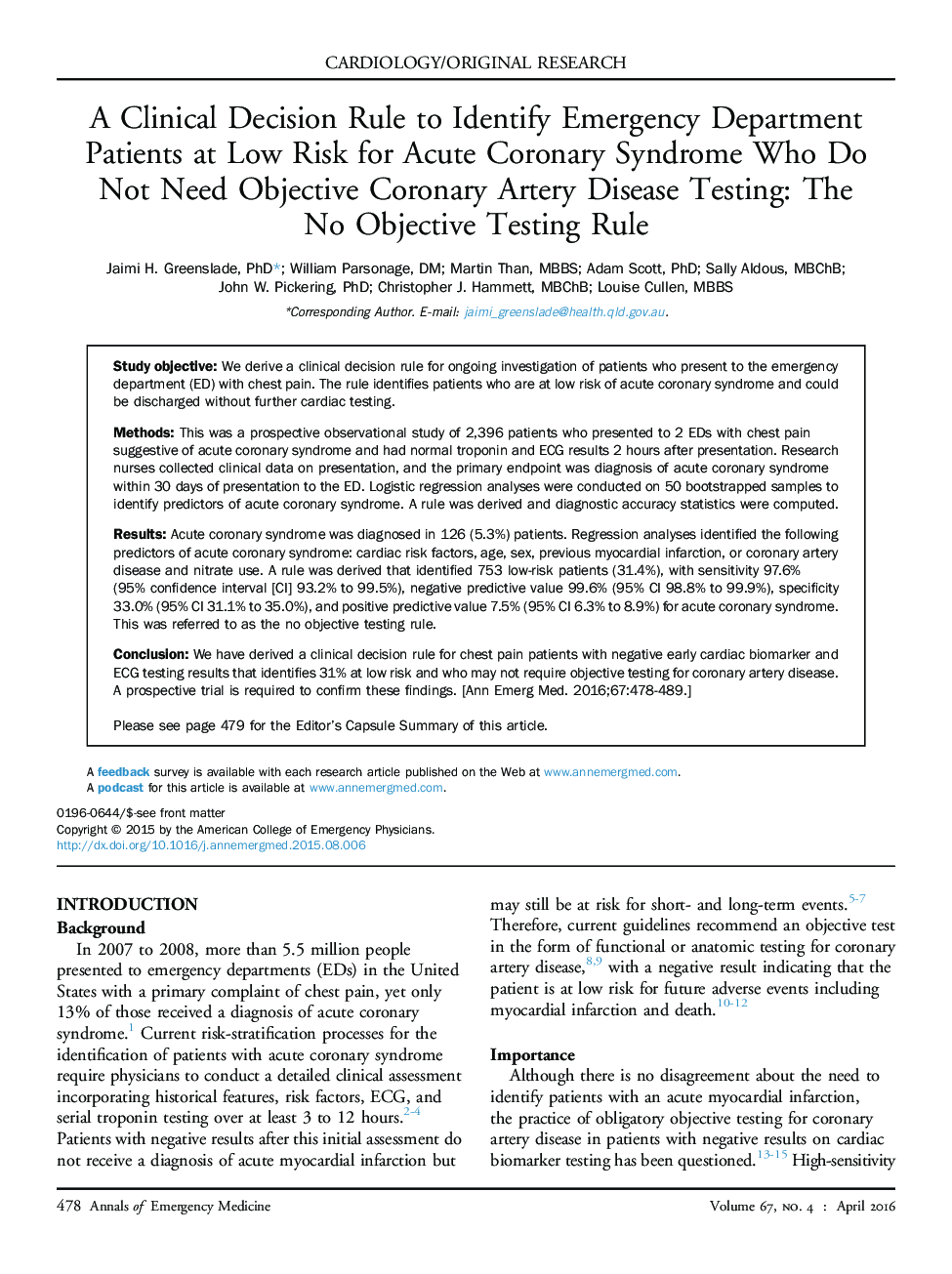| Article ID | Journal | Published Year | Pages | File Type |
|---|---|---|---|---|
| 6080815 | Annals of Emergency Medicine | 2016 | 14 Pages |
Study objectiveWe derive a clinical decision rule for ongoing investigation of patients who present to the emergency department (ED) with chest pain. The rule identifies patients who are at low risk of acute coronary syndrome and could be discharged without further cardiac testing.MethodsThis was a prospective observational study of 2,396 patients who presented to 2 EDs with chest pain suggestive of acute coronary syndrome and had normal troponin and ECG results 2 hours after presentation. Research nurses collected clinical data on presentation, and the primary endpoint was diagnosis of acute coronary syndrome within 30 days of presentation to the ED. Logistic regression analyses were conducted on 50 bootstrapped samples to identify predictors of acute coronary syndrome. A rule was derived and diagnostic accuracy statistics were computed.ResultsAcute coronary syndrome was diagnosed in 126 (5.3%) patients. Regression analyses identified the following predictors of acute coronary syndrome: cardiac risk factors, age, sex, previous myocardial infarction, or coronary artery disease and nitrate use. A rule was derived that identified 753 low-risk patients (31.4%), with sensitivity 97.6% (95%Â confidence interval [CI] 93.2% to 99.5%), negative predictive value 99.6% (95% CI 98.8% to 99.9%), specificity 33.0% (95% CI 31.1% to 35.0%), and positive predictive value 7.5% (95% CI 6.3% to 8.9%) for acute coronary syndrome. This was referred to as the no objective testing rule.ConclusionWe have derived a clinical decision rule for chest pain patients with negative early cardiac biomarker and ECG testing results that identifies 31% at low risk and who may not require objective testing for coronary artery disease. A prospective trial is required to confirm these findings.
